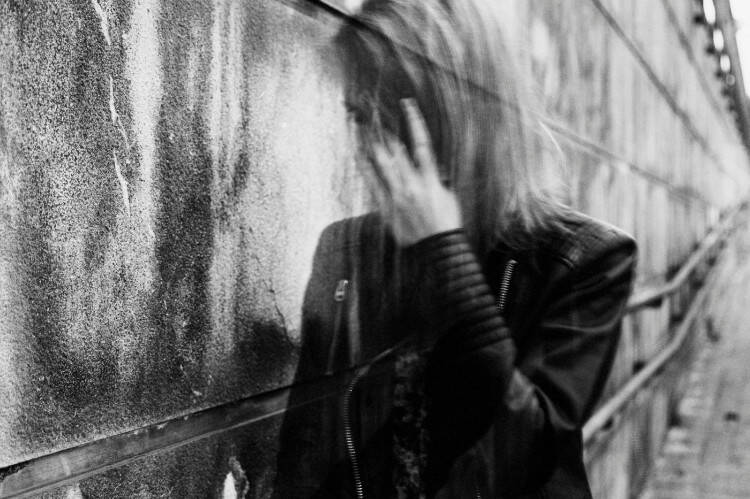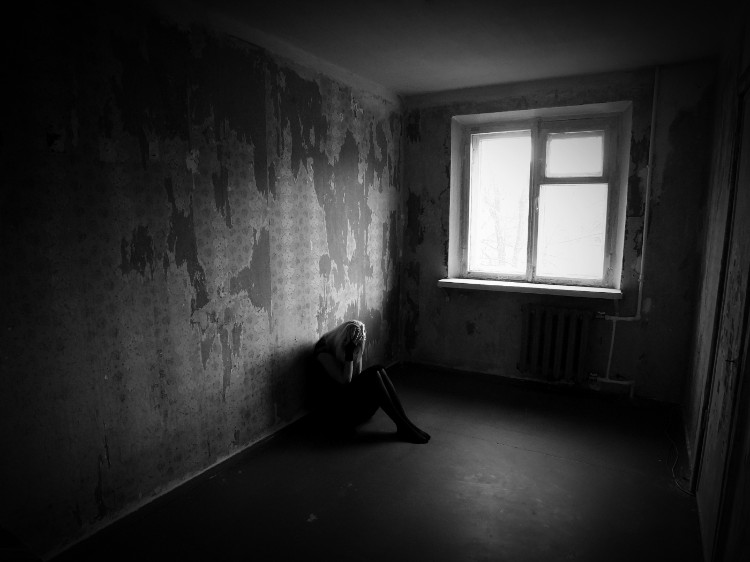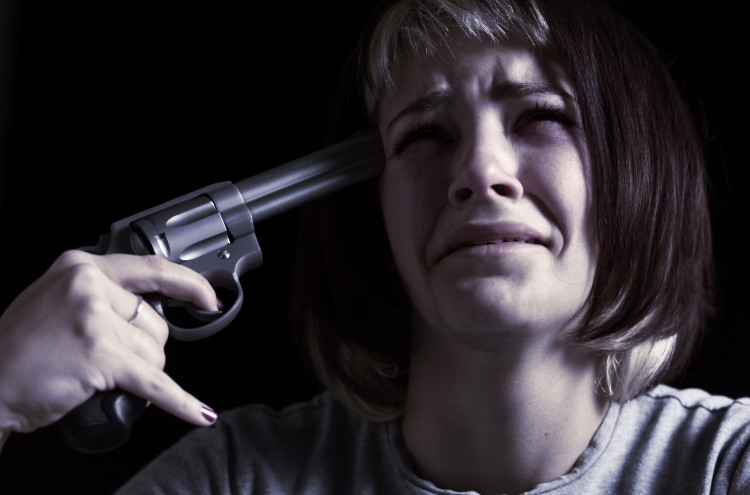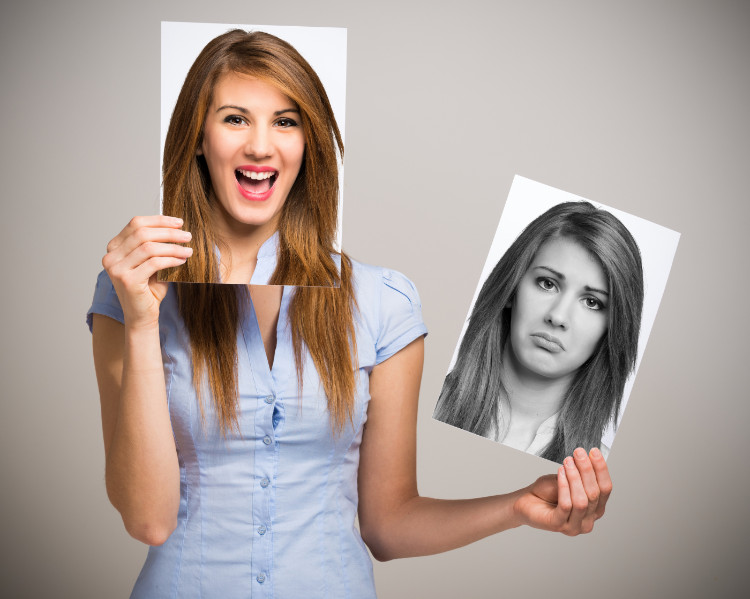Do you have symptoms of depression?

Depression is one of the psychiatric illnesses. Perhaps for this very reason, people do not like to admit to themselves that they suffer from it. Nor do they like to talk about it openly.
Article content
Early identification of the problem and early treatment in the hands of a professional can prevent a tragedy and thus save a life.
Depression, or if you prefer pathological bad mood, can occur in anyone, at any time. Stress, work tension, domestic disagreements and tragedy. These and many more situations are the cause of triggering events that people cannot control and resist on their own without the help of a doctor. Often stress reaches the point of no escape and ends in suicide.
Depressive symptoms, depression and bipolar affective disorder
Depression is one of the psychiatric illnesses - disorders to be precise.
More specifically, it is a sub-category of mood disorders, along with bipolar affective disorder (manic-depressive disorder), but also of other psychiatric diagnoses. It is a serious illness whose hallmark is long-term chronic low mood (sadness, anxiety, tearfulness).
In psychiatry, the most important thing in making a definitive diagnosis is to distinguish the actual state of depression from a transient depressed mood, manifested by temporary depressive symptoms. Depressed mood can affect anyone, depending on the current stressful situation in which the individual is at the time. It is an appropriate response to a difficult period. The state of sadness and feelings of hopelessness is transient.
Depressive symptoms
Depressive symptoms occur in isolation in difficult life situations, in pathological depression, as one phase of bipolar affective disorder, as part of or a manifestation of other psychiatric illnesses, and as part of a range of physical illnesses (chronic tingling pain, cancer, alcoholism, brain disease, obesity others).
During their suffering, which may be triggered by the above factors, patients suffer from states of sadness and hopelessness. They feel that there is no way out of the situation.
They have a negative outlook on the world, often isolate themselves from their surroundings, seek solitude. Their minds are preoccupied with the problem at hand, and they are often unable to focus, concentrate and respond adequately. Their responses are simple, slow and delayed.
They lose vital energy, become exhausted, tired and unable to carry out normal activities either at home or at work. They become physically inactive.
They often appear to those around them as "slow" or lazy individuals.
Depressive symptoms also appear as a temporary condition in certain life situations that negatively affect a person. For example, there may be a death in the family, loss of a job, divorce, economic problems, etc. These circumstances cause a sudden negative change in the individual's life that he or she must deal with in some way. Initially, he or she sees it as a great misfortune; a thousand things are going through his or her mind.
He asks himself questions like:
Why did this happen to me?
Who did I do what to?
He suffers from remorse and blames himself for the misfortune.
Note: Depressed mood and depression is not just a state of bad and sad mood on the psychological level, as most people mistakenly think. It is a serious illness of the whole organism. The physical level is equally affected (exhaustion, chronic fatigue, concentration disorders, memory disorders, reduced physical activity...).
Depression

Although depression is still seen as a "taboo" in the world, it is a very common phenomenon. It affects young and old alike.
It is an illness that is classified as a psychiatric diagnosis. People are therefore reluctant to talk openly about it and are ashamed to seek professional help. This is the reason for the progression of the illness in the individual concerned and a frequent cause of suicide. Whether or not we are willing to admit it, more and more people are suffering from depression.
According to the World Health Organisation, there are up to 350 000 000 sufferers. These figures include individuals who have sought professional help.
It is estimated that there may be many more people suffering from depression who have not sought help.
With this high number of sufferers, depression has ranked as the fourth most common illness. It is expected to move to the top of the list.
Depression is characterised by pathological sadness.
It lasts for a long time, is often combined with a feeling of anxiety and literally torments the sufferer. He is in a pessimistic mood and mindset. He is unable to take pleasure in things that used to give him joy. He loses interest not only in activities but also in people. He withdraws into himself and begins to blame himself.
The distressing thoughts are most often at night. This causes sleep disturbances in the sense of frequent waking at night, early waking in the morning and then drowsiness and fatigue the following day.
The patient is physically inefficient, takes an inordinate amount of time to do everything, is delayed in every activity, and finds each of the daily activities excessively exhausting. Concentration and short-term memory disorders can be observed in parallel.
Bipolar affective disorder
Bipolar affective disorder is a serious psychiatric disorder or, better said, an illness falling under mood disorders. As the name implies, it is characterized by two opposing poles.
On the one hand, it is manifested by a manic phase, which is characterised by excessive elevation of mood. The other phase is depression, which is the other counterpart of this disorder.
The manic phase is a phase of excitement and overexcitement, when the patient, regardless of the seriousness of the situation, has an excessively high self-esteem, a lot of energy, is hyperactive, talks a lot and thinks about everything. Sometimes there may be a so-called thought spurt, which results in a "word salad". Only the person concerned understands the word salad, the other party does not understand what he or she is communicating.
Excessive excitability often leads to aggressive behaviour on the part of the sufferer.
The depressive phase, on the other hand, is a phase of hypoactivity, sadness, anxiety and reduced self-esteem. The sufferer communicates minimally, cannot concentrate, respond or react quickly. He cannot remember what has been said in a short time frame. Therefore, he cannot respond and react adequately.
At this stage there is no risk of aggressive behaviour. The patient is rather anxious, tearful and withdrawn.

In bipolar affective disorder (BAP), also called manic-depressive disorder, the phases usually alternate over a period of hours.
According to statistics, bipolar affective disorder is responsible for 25% to 60% of suicide attempts, of which 5% to 20% are completed suicides.
It rarely occurs as a stand-alone diagnosis. Most of the time, another mental illness is also present.
What causes depressive states?
There are a wide variety of causes of depressive states. However, genetic predisposition, exogenous influences (tragic event, addictive substances) or organic brain damage play a major role.
Depression is divided into two categories based on the individual triggering factors of pathologically bad mood. The other division described is based on the symptoms that are foregrounded in a particular patient and the division from a nosological point of view.
Classification of depression on the basis of factors
- Exogenous depression or even the so-called psychosocial depression arises on the basis of the action of some external factor. The name itself implies that it is the action of some external factor on the psyche and mind of a person. The external factor may be another person or society whose influence has a negative impact on the individual, which is the origin of his bad mood.
- This includes tragic events such as a death or serious illness in the family, divorce, loss of a job, lack of finances, or general failure.
- Endogenous depression is depression in which an internal factor is assumed to be at work. By internal factor we mean, in particular, the person's personality, character traits and behaviour.
- A person's personality is influenced to a significant extent by genetics.
- Family background in early childhood and later the influence of society at the time when personality is being formed.
Classification of depression from a nosological point of view
1. Psychogenic depression is depression resulting from some factor that acts directly on a person's psyche and experience.
We include here various psychological traumas, for example, from the loss of a loved one, post-traumatic reaction as a consequence of a previous negative experience (victim of kidnapping, rape, assault, traffic accident).
2. Organic depression arises as a result of organic disease or direct brain damage.
These are various medical conditions that result in disturbances in the individual's perception and affect his or her mood. They are mainly direct brain damage, for example, from an accident, disease (tumour), poisoning by toxic substances or damage to the brain by addictive substances (alcohol, drugs).
Brain damage is also caused by various bacterial or viral infections (meningitis).
This category also includes other diseases of the body such as vascular diseases with consequent blood or oxygen deficiency in the brain, metabolic diseases such as diabetes, as well as various long-term painful conditions or conditions causing disability or limitation that have a significant impact on the patient's experience.
Classification of depression based on clinical picture (symptoms)
- Apathetic depression is predominantly manifested by apathy (depression). The patient is almost completely unresponsive to external stimuli, indifferent, emotionless, uninterested in external aspects and society. The external world seems to have ceased to exist for the patient. The state of apathy is usually noticed by the environment, and the individual may not be aware of this behaviour at the time.
- Agitated depression manifests itself in the opposite way to apathetic depression. Agitation means a morbid restlessness. The patient is restless internally. He feels uneasy, is always thinking about something, is looking for a solution. Psychomotor agitation may also appear at times, when the internal restlessness is joined by motor restlessness. This can be observed mainly in the patient's speech and gesticulation. For example, the patient is constantly grasping his hands, playing with his fingers or an object, cannot stay in one place, is pausing, changing positions.
- Psychotic depression is the most severe type of depressive disorder. Pathologically bad mood is combined with other psychotic symptoms or depression is just a manifestation of another mental illness. Alternatively, it is a combination of depression and another mental illness. This type of depression is outwardly manifested by a bad mood, anxiety, tearfulness, accompanied by paranoia, hallucinations (auditory or visual).
How does depression manifest itself?
The individual manifestations of depression depend on several factors.
These include the patient's personality traits, the solvability/insolvability of the situation, the degree of depression, the patient's own attitude towards his/her diagnosis and the initiation of therapy or help from the environment, especially the correct attitude of the family.
1. Mental Difficulties - At the forefront is the preoccupation of the mind with the question and the search for answers and solutions to what triggered the depression. This problem is paramount to the patient and he is unable to get rid of it.
As a consequence of the priority of one thought, the patient is unfocused on everything else that is no longer a priority for him. There is impaired concentration, lack of focus, impaired communication with the environment, and impaired short-term memory.
As a result of the psychological difficulties, the ability to make decisions is significantly reduced. Negative emotions predominate, namely pathologically bad mood accompanied by anxiety, tearfulness, crying attacks, especially in private. Paranoia or hallucinations may occasionally be associated.
In some cases, depression even ends in a suicide attempt (suicide is preceded by thoughts of suicide and self-blame).
2. Sleep disturbances - Also a subset of psychological problems. The persistence of sleep disturbances is closely linked to physical problems, which also arise from insomnia. Insomnia and early morning awakenings are typical of depression. They cause significant daytime sleepiness and exacerbate fatigue, exhaustion and disturbances in concentration.
Physical disorders - Fatigue, malaise, exhaustion prevail. The patient is weak, feels a general weakness of the body and muscles, his knees buckle, his legs may shake and he can hardly hold on.
Dizziness, flashes before the eyes and collapses from exhaustion are frequent. The patient is physically unfit, which is aggravated by eating disorders. In most cases there is a lack of appetite, and in cases of self-recrimination the patient tortures himself by starvation. Sporadically and in mild forms of depression, overeating may be observed.
4. Difficulties in social interaction - Introverted (antisocial) behaviour manifests itself by withdrawing into oneself. The patient seeks solitude and purposefully avoids contact with people and with society as such. In case he/she is in society, he/she does not feel comfortable there, cannot establish relationships as before (does not want to), has problems with concentration and communication.
The patient tries to get to his solitude as soon as possible, where he thinks a lot again. Psychological and communication problems with people subsequently cause problems at work, in society, but also in the family and end up damaging relationships and losing close people.
5. Sexual difficulties - Loss of appetite for sex is prevalent. Sexual intercourse is not fulfilling and does not feel good.
Caution:
The combination of all these categories or areas affected by depression is followed by economic problems. The patient does not perform adequately at work due to impaired concentration, communication, withdrawal, exhaustion. There is also a high risk of misconduct and subsequent loss of employment, resulting in economic problems and worsening depression.
Degrees of depression
Based on the triggering factor, as well as the length of time it has been present, the state of depression may not manifest itself in the same way for everyone.
The course of the illness ranges from mild to deep depression. The depth of depression also determines the treatment or prognosis.
The boundaries between the different stages are fragile. Even mild depression can eventually develop into a severe condition leading to suicide.

- Mild depression manifests itself in a bad and sad mood, thinking about the problem and looking for a solution.
- It usually does not cause serious difficulties in the workplace or in society.
- The patient is able to continue to perform normal activities or their performance is only slightly impaired.
- The patient is absorbed mainly when falling asleep and in the resting period, when he/she thinks to a greater extent about the situation that caused the bad mood.
- Tends to seek solitude.

- Moderate depression is manifested by a more severe degree of depressed mood, and episodes are also more frequent.
- The patient begins to have difficulty performing most normal activities.
- He is anxious, tearful.
- Outside the company, bouts of depression and crying occur.
- The patient suffers from insomnia, lack of appetite, fatigue and a decrease in physical performance.
- Changes in experience are also noticeable to others.

- Severe depression is the most severe form where the patient's life is at risk.
- Pathologically bad mood prevails. It can be said to be permanent.
- The patient is tired, exhausted both mentally and physically.
- Sleep disturbances are frequent, mainly insomnia.
- Eating disorders (starvation), self-blame.
- Does not seek company, the prevailing view is of a hopeless situation with which he is identified.
- Sometimes the only way out (for the patient) is to end his life.
What to do if you have symptoms characteristic of depression?
All psychiatric illnesses, as well as depression, cause the patient to feel ashamed of admitting the diagnosis and to discriminate and separate others from the patient in society.
For some obscure reason, the environment treats psychiatric diagnoses with caution.
Many people think of psychiatric illness in terms of hallucinations, paranoia, aggression and dangerous behaviour, which in most cases is not true. Most psychiatric illnesses do not pose a danger to the environment and depression is one of them. It is the biggest risk for the patient if he or she does not take the right approach and start treatment.
Pharmacological treatment of depression
The essence of initiating pharmacological treatment is the patient's awareness and admission that he or she is suffering from a mental illness. If he or she identifies with this fact in time, the correct diagnosis by way of a specialist - in this case a psychiatrist - comes into play.
Only after the diagnosis of depression is made will the doctor determine the medication that is the most appropriate option for the individual patient, based on the degree and prevailing symptoms.

Please note:
The onset of action of drugs for depression and other psychiatric illnesses is approximately 2 weeks (antidepressants in particular have a prolonged onset of action).
It is essential that the patient is sufficiently informed of this and is not surprised that after a few days he or she still does not feel an improvement in his or her condition.
The exact effect of the drug can only be properly assessed after a period of approximately 3 weeks. Treatment of depression requires time and patience on the part of the patient to be effective.
Antidepressants are the most commonly used drugs for the treatment of depression or in the treatment of other conditions such as dysthymia, eating disorders, cyclothymia. They are also administered for chronic pain. Their use is also in stressful situations, especially in patients suffering from high blood pressure and increased heart rate, where they are given along with antihypertensives and tachycardia drugs.
Several types of antidepressants are known:
- SSRIs (serotonin reuptake inhibitors - the so-called happiness hormone) - for example Seropram, Seroxat, Prozac, Paxil, Zoloft, Deprenon, Deprex, Fevarin, Citalec, Citalopram, Arketis, Paretin, Paroxetine and others...
- IMAOs (monoamine oxidase inhibitors) - for example Parnat, Aurorix, Nuredal...
- tricyclic broad-spectrum antidepressants - for example Melipramine, Amitriptyline, Anafranil...
- tetracyclic antidepressants - for example Remeron, Mirzaten, Mirtazapine, Esprital
- Generation IV and V antidepressants - for example Efectin
Related










